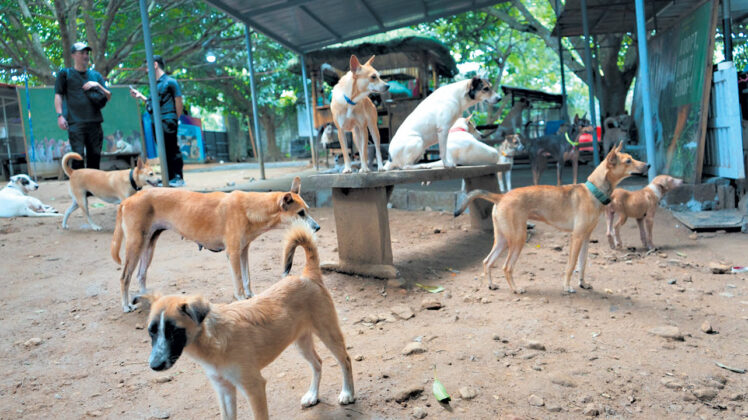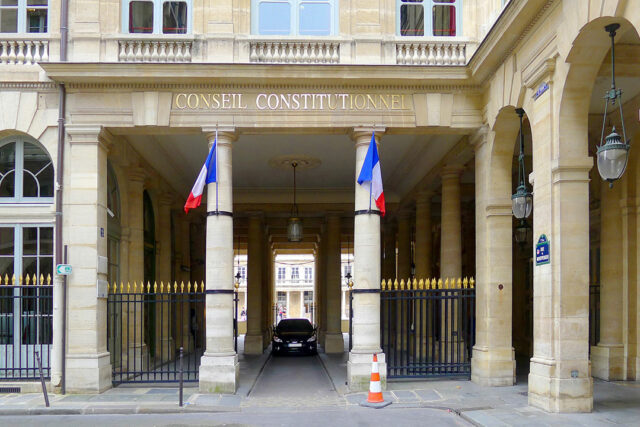A paws trophy

Mazda PHL gives rescued dogs and cats hope — and a set of wheels
IN A HORRIBLE hit-and-runincident, Garen, a pudgy aspin (or asong Pinoy), was run over by a vehicle — leaving, according to Malou Perez, the creature’s eyeballs “hanging out” of their sockets. The poor animal, who was someone’s pet, went about his way for a few days before someone mercifully reported the sorry animal to the Pawssion Project. “The owner couldn’t afford to bring him to the vet,” she narrated. By the time Garen was brought to a veterinarian, it was too late to save his eyeballs — and sight.
Still, Garen is one of the nicest dogs you’ll ever meet, said Malou. And, ironically, “He’s also probably opened the most number of eyes.” She’s referring to the pressing problem of stray cats and dogs — particularly the awful fate that usually awaits them.
Lolo Paul, meanwhile, is a rescue from the Old Balara pound. He settled on the floor and rested after feeling more comfortable in the unfamiliar environs of the showroom. “He was one of thousands of dogs in pounds waiting to die in vain. That’s basically why I started Pawssion Project — because of dogs and pounds,” added Malou. It was close to seven years ago when the animal advocate had an epiphany as she heard about 50 dogs waiting to be shot at a pound. Prior to that, she was unaware that it was legal to exterminate animals just like that.
At the Mazda Philippines showroom, Garen trundled — tentatively, at first — with Ms. Perez. The dog would bark occasionally, the sound filling the cavernous space. I wondered if this was a move to ascertain the unfamiliar surroundings he was in, or an expression of nervousness. Malou had told us that Garen’s smell and hearing are unusually heightened to make up for his sightlessness.
Garen is surely a fitting poster pooch (or, as they call him, an “ambassadog”) for the Pawssion Project — a nonprofit, nonstock organization devoted to the “rescue, rehabilitation, and rehoming of rescued animals.”
Mazda Philippines recently forged a partnership with the group to help raise funds for the upkeep and basic needs of some 400 rescued dogs and cats who call a leased property in San Jose Del Monte, Bulacan home. Malou oversees another shelter in Bacolod with around 300 rescues. The unwanted and abandoned find refuge and safety in both locations — not to mention food, water, and even medical attention. Malou said she cried when she saw how some of the dogs reacted to being given toys. They didn’t know what to make of them because they simply didn’t experience having toys.
“We have been so desensitized to the sight of stray dogs and cats in the city that we don’t realize what becomes of them or even how they manage to stay alive,” she rued.
On top of the “long-term loan” of a specially equipped and fitted Mazda BT-50 pickup truck that is designed to transport animals in safety, Mazda Philippines is donating P1,500 to the Pawssion Project every time a new Mazda BT-50 (regardless of variant) is sold from this month onward. The sum will sponsor a rescue on behalf of the buyer. Furthermore, BT-50 buyers “will also be given the opportunity to adopt, donate, or continue the sponsorship of a rescue through a certificate that comes with the purchase of each Mazda BT-50.”
Pawssion Project’s BT-50 is a 3.0L AT 4×2 variant, and features livery designed by local artist Jaykee Evangelista “to help raise awareness about Pawssion Project and its cause.” It is fitted with an “aluminum canopy that will protect cargo such as animal food, medicine, crates, and various donations and supplies from the elements, and keep them safe and secure,” reported Mazda Philippines. Additionally, a cargo bed sliding tray makes it easier to load and unload cargo without needing to board the cargo bed.
Mazda Philippines President Steven Tan shared that he loves dogs, growing up in a household with big dogs and cats. The opportunity to assist Pawssion Project is a perfect fit because, he averred, “We’re always looking for purpose every time.” This is certainly the case with the earlier partnership with the Katala Foundation, forged in 2020, seeking to protect the endangered endemic Philippine Pangolin.
“I don’t want to go on a journey or program that’s not sustainable,” Mr. Tan added.
Ms. Perez shared with “Velocity” that 90% of their rescues are comprised of “death row” dogs in pounds, with the rest being hit-and-run survivors, sick dogs on the verge of death, and even surrendered pets because either the owner can’t feed their dogs or a neighbor turns over a dog whose owner passed on.
There have been cases of kittens and puppies left in boxes, sacks, or even plastic bags outside the shelter. “Basically, most of them are unwanted,” she sadly noted.
There’s a lot of euthanasia going on in pounds, Malou continued. “In the Philippines, not a lot of people know the difference between a shelter and a pound. Almost all of the shelters in the Philippines are nonprofits that are privately owned, while pounds are being run by the government.
“The pounds exist because they have the mandate to catch strays, to protect the community from the rabies virus. The problem is, because not everyone is educated that rabies is not inborn, the fear in them is what compels them to call the pound to catch strays,” she lamented.
Of course, the biggest problem of pounds is the lack of financial resources. “While people think that dogs are kept there while they await adoption, and while they await adoption they are taken care of and fed, that is not the reality.” What happens is that many of the dogs die even before they’re euthanized because of hunger or disease.
What can we do? First, adopt, said Malou. Don’t buy dogs or cats. Next, choose compassion. Did you know that just by naming a stray you always see already impacts them positively? “They react differently if you call them by their names,” she stressed.
“Additionally, demand better programs from the government, as culling is never the solution for this problem that has existed for years. The only humane way to address the stray population is through spaying and neutering, through penalizing irresponsible pet owners. Many dogs in pounds have owners, but they’re irresponsible,” Ms. Perez lamented. “We need to build a kinder world for animals.”
To check out what you can do to adopt, sponsor, donate, volunteer, or advocate, visit www.pawssionproject.org.ph, and follow Pawssion Project on Facebook and (pawssionproject) on Instagram, X, YouTube, and TikTok.




















